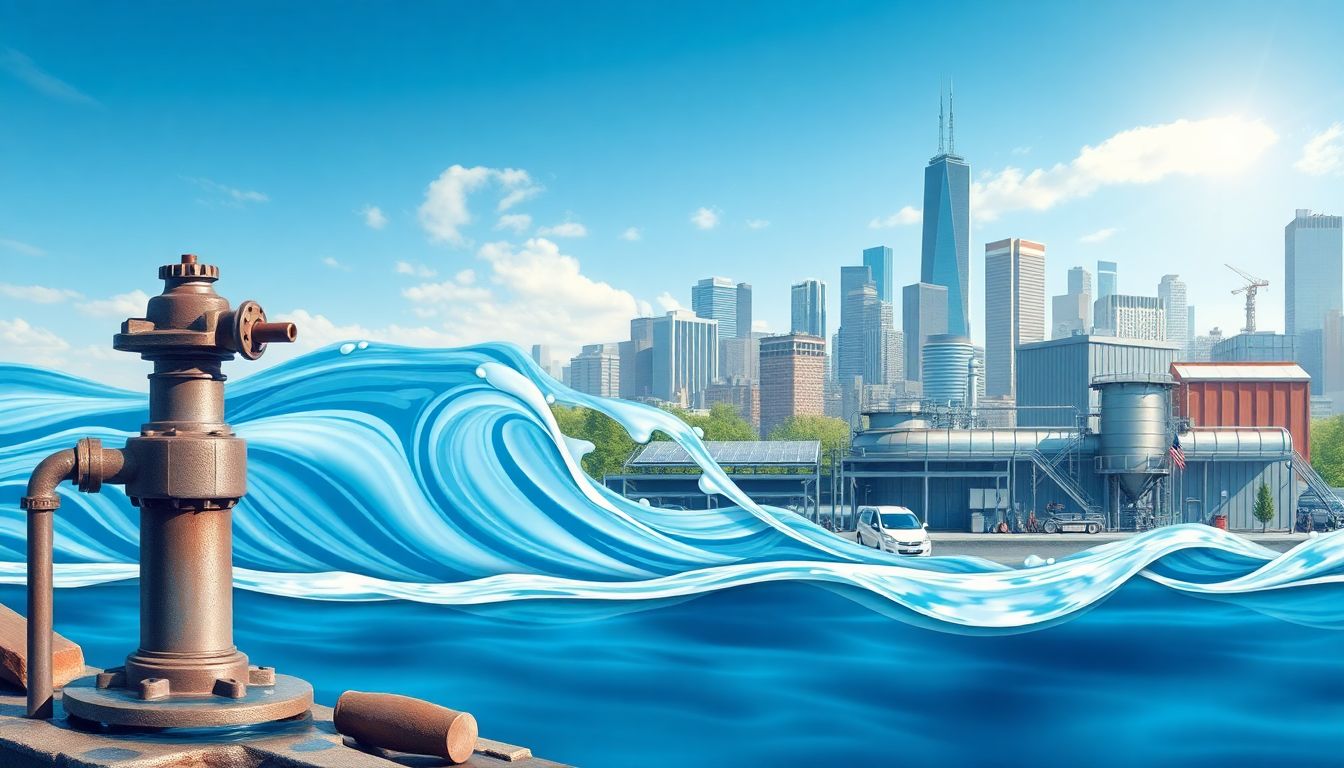
Water is central to everyday life and America’s economy. From drinking and farming to industry and recreation, clean water keeps everything running smoothly. Over the years, the way water is supplied, regulated, and treated has changed a lot. Understanding this history helps us see what’s coming next, especially with new challenges like climate change and aging infrastructure. It shows how the water business has grown and adapted to meet the needs of millions of Americans.
The Early Beginnings of Water Supply in America
Historical Context and Infrastructure Development in the 19th Century
In the 1800s, America was just starting to grow. Cities relied mainly on nearby rivers, lakes, and groundwater. Water systems were basic, often just open channels or wells. Cities built small waterworks with simple filtering methods to clean the water before it reached homes. These early efforts were crude but set the stage for larger projects later.
Population Growth and the Need for Improved Water Systems
As the country expanded, so did its demand for water. The Industrial Revolution pushed factories and cities to use more water than ever before. Major aqueducts, like the Croton Aqueduct in New York City, transformed urban water supply. These large-scale systems brought water from distant sources, making urban life safer and healthier.
The Rise of Modern Water Technologies and Regulation
Advancements in Water Treatment and Filtration in the 20th Century
The 1900s brought big changes. Chlorination started in the 1900s to kill germs, reducing waterborne diseases. Filtration methods improved with sand filters and later with advanced membrane techniques. Cities moved from relying on natural sources to treating water in large municipal systems. These improvements made drinking water safer across the country.
Regulatory Frameworks and Federal Oversight
Laws began to protect water quality in the 1970s. The Safe Drinking Water Act of 1974 set standards for water safety. The Clean Water Act of 1972 aimed to keep lakes, rivers, and streams clean. Agencies like the Environmental Protection Agency (EPA) began to oversee water standards and ensure companies follow the rules.
Case Study: The Transformation of New York City’s Water System
New York’s water system is a prime example. It expanded with tunnels and reservoirs that provide pure water to millions. Large infrastructure projects cleaned up water quality and made supply reliable even during droughts. This success story shows how investments improve water safety and availability.
Challenges and Changes in the 21st Century
Growing Population and Urbanization
More people moving to cities means more stress on water systems. Old pipes and treatment plants may struggle to keep up. Cities now use smart tech and sensors to better manage water flow and detect issues early, saving costs and preventing shortages.
Environmental Concerns and Climate Change
Droughts, floods, and pollution threaten water supplies. Climate change is making water shortages worse and increasing the risk of contaminated sources. Many cities are working on sustainable solutions to handle these new risks and protect their water systems for the future.
Water Quality and Public Health
Emerging contaminants like pharmaceuticals and lead pipes are a growing concern. Public awareness campaigns now highlight how community efforts can improve water safety. Fixing old pipes and monitoring pollutants help ensure clean water reaches everyone.
The Role of Technology and Innovation in Shaping the Future
Digital Transformation and Smart Water Systems
New technology is paving the way. Sensors, IoT devices, and data analytics allow cities to monitor water systems in real-time. Automated controls can fix leaks instantly, saving water and money. Cities like San Diego are leading with smart water management systems.
Private Sector and Public-Private Partnerships
Private companies play a bigger role today. These partnerships can bring fresh ideas and funding to improve water projects. Successful collaborations often show better service and cost savings, making water systems more efficient and reliable.
Future Outlook and Policy Recommendations
Looking ahead, investing in infrastructure is crucial. Governments and communities should support water projects that update aging pipes and treatment plants. Encouraging innovation and sustainability will ensure safe water for generations. Stakeholders need to work together to keep water accessible and clean.
Conclusion
The story of America’s water industry is filled with innovation, challenge, and progress. From simple early systems to smart, digital solutions today, the industry has constantly adapted. Yet, new challenges like climate change and aging pipes keep testing our resilience. The future depends on smart investments, new policies, and community action. Water plays a vital role, and we must keep working to ensure safe, reliable supplies for all Americans. As we move forward, understanding this history can inspire better solutions for tomorrow’s water needs.
